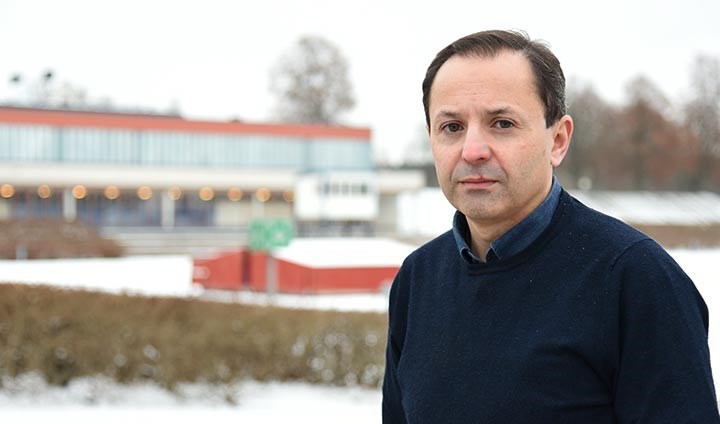Chronic inflammation causing loss of muscle mass

Fawzi Kadi.
Elevated levels of the inflammation marker CRP in the blood is an underlying cause of the loss of muscle mass in elderly persons, as shown by a new study from Örebro University and University of Nottingham.
We start losing muscle mass at the age of 40. We are talking about some ten per cent of the total muscle mass for each ten-year period and this may lead to fall-related injuries, slowing metabolism and reduced quality of life. Today, very little is known as to why muscle mass is reduced with age, but one theory is that it is caused by what has been termed 'inflammaging'. It is characterised by chronic moderately elevated levels of inflammation markers in the blood.
"We wanted more specifically to examine the correlation between CRP, an inflammaging marker, and muscle mass in elderly persons," says Fawzi Kadi, Professor of Sports Physiology and Medicine at Örebro University.
C-reactive protein, CRP, is measured in the blood and can be used as a marker for both inflammaging and infection in the body. The results of the study, in which women aged 65 to 70 participated, show a correlation between increased CRP levels in the blood and lower muscle mass.
CRP reduces size of muscle cells
The research team explored further how CRP affects muscle cell turnover and function by exposing, in a laboratory environment, isolated muscle cells to CRP.
"We were able to see that muscle cells exposed to CRP reduced in size. These are new findings which explain the causal link between elevated CRP values and reduced muscle mass. Researchers have previously only been able to find a correlation between the two, using large population studies," says Fawzi Kadi.
However, the researchers from Örebro University and University of Nottingham were also able to show exactly how CRP affects the size of muscle cells, which has not been done before. Their findings show that CRP affects muscle cells' protein synthesis, that is, the generation of new proteins taking place in all living cells.
"Muscles are our main protein depots. We saw that CRP interferes with the protein synthesis in the muscle cells, hence contributing to the loss of muscle mass," explains Fawzi Kadi.
Can changed behaviour impact inflammaging?
With researchers for the first time possessing knowledge of the mechanism that links gradual loss of muscle mass to inflammaging, opens up for new studies with a focus on how to counteract the reduction of muscle mass by controlling levels of inflammation markers.
"A mechanism which explains the connection is of great significance for both preventive measures and drug development. What is interesting is that inflammaging is a process quietly at work. If we can tackle inflammaging in time, are we then able to postpone the development of a number of chronic diseases?"
In their current studies, it is the preventive measures that Fawzi Kadi, together with his colleague Andreas Nilsson, Senior Lecturer in Sports Physiology, are focusing on. More particularly, lifestyle factors.
"Andreas Nilsson is leading studies where they look at what effects changed behaviour has on health. If you swapped one hour of watching TV for another activity, what effect would that have for the inflammaging in your body? That's just one example from our studies," says Fawzi Kadi.
In another study, the research team is studying the correlation between inflammaging and physical activity, which will involve analysing the levels of a number of inflammatory biomarkers, including CRP.
Text and photo: Jasenka Dobric
Translation: Charlotta Hambre-Knight
CRP
CRP, or C-reactive protein, is part of the immune system and its concentration rises rapidly in the event of an infection caused by bacteria. An elevated CRP value can often be seen already in the first 24 hours after the onset of the infection. On recovery, CRP levels rapidly go down to normal levels.
Source: Swedish healthcare hotline 1177 Vårdguiden
